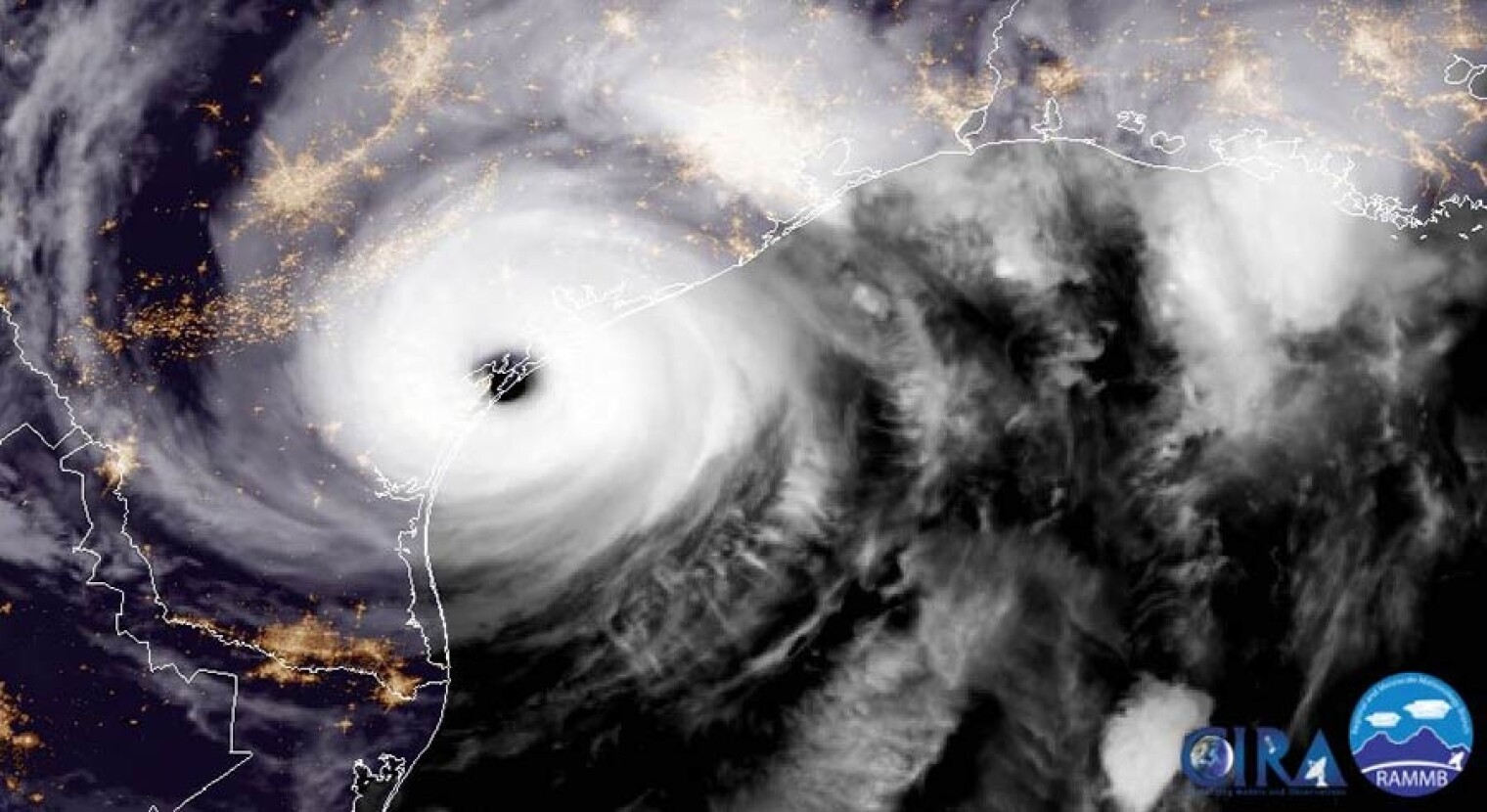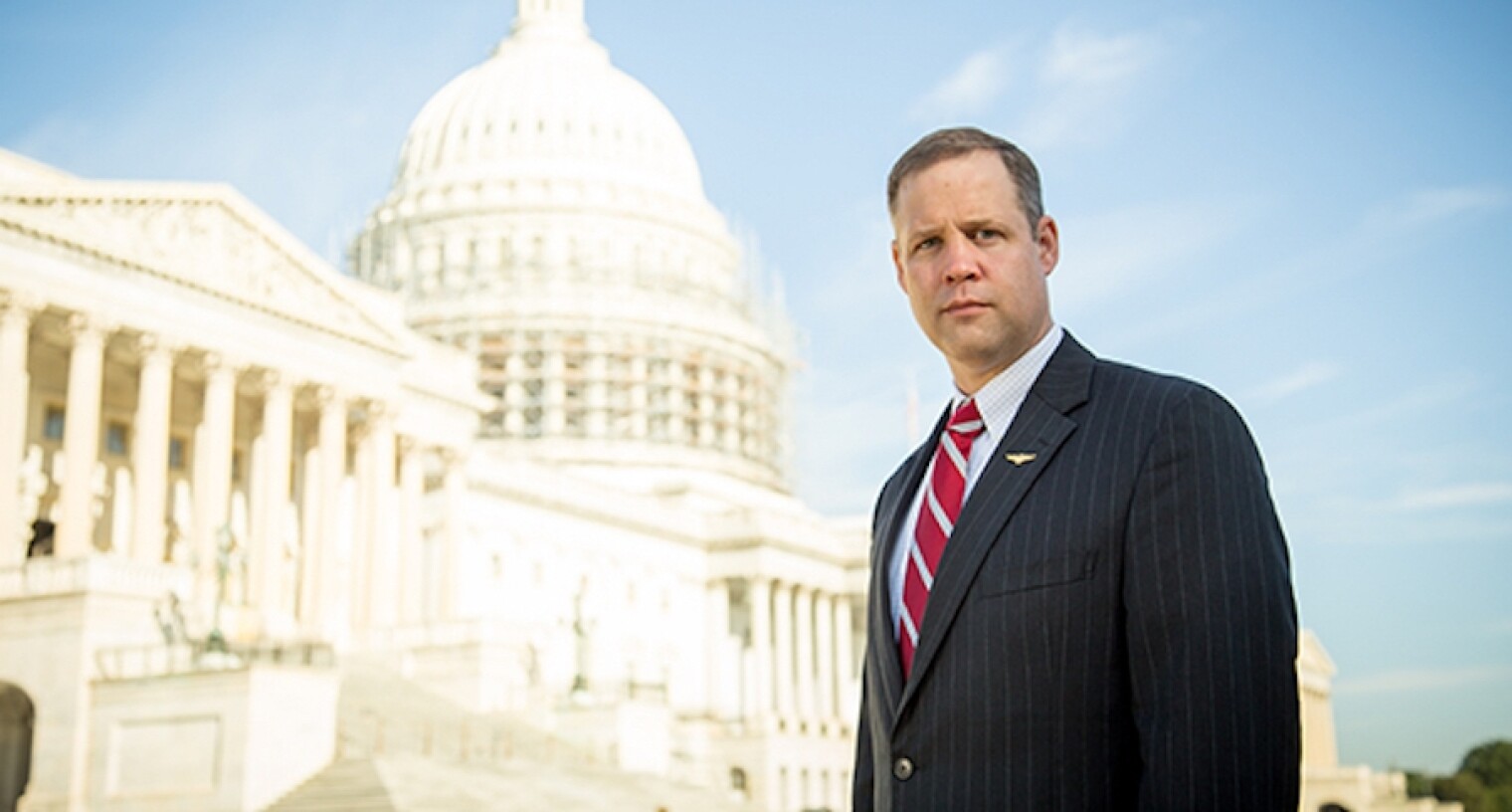| |
What’s Ahead
 |
| Hurricane Harvey making landfall on the coast of Texas last week, as imaged by NOAA’s new GOES-16 weather satellite. (Image credit – NOAA) |
As Fall Arrives, Congress Has a Long To-Do List
Members of Congress have returned to Washington this week facing a high-stakes agenda. They will be under pressure to provide emergency disaster relief funds to regions devastated by Hurricane Harvey. At the same time, Congress and the White House must reach agreements to raise the federal debt ceiling and extend current appropriations beyond the end of the fiscal year on Sept. 30. Should negotiations descend into brinksmanship, the federal government could face a shutdown at the end of the month.
Beyond these headline-grabbing issues, a number of matters bearing on science policy are also in the offing. The Senate Appropriations Committee is scheduled to release its spending bill that funds the National Institutes of Health and the Education Department on Wednesday and vote on the bill on Thursday. The Senate version of the National Defense Authorization Act, which sets policy for the Defense Department and the National Nuclear Security Administration, is due for consideration on the floor. The Senate might also move its expansive “Energy and Natural Resource Act” to a floor vote, while House Energy and Commerce Committee Vice Chair Joe Barton (R-TX) is reportedly at work on a comprehensive authorization bill for the Energy Department.
Amendments to House Spending Package Piled High
In addition to its other business, the House is planning to vote soon on the eight spending bills it did not already pass in a security-focused appropriations package in July. Members have submitted a long list of amendments to the bills, and the House Rules Committee will meet Tuesday afternoon to decide which will be voted on. Both Republican and Democratic members have introduced amendments to shape federal activities relating to climate change, including a proposal from Rep. Andy Biggs (R-AZ) to prohibit federal spending on the National Climate Assessment. Reps. Jamie Raskin (D-MD) and Debbie Wasserman-Schultz (D-FL) are proposing higher funding levels for climate and weather activities at the National Oceanic and Atmospheric Administration. Rep. Jacky Rosen (D-NV) is proposing higher funding for the National Science Foundation’s Computer and Information Science and Engineering Directorate. Reps. Norma Torres (D-CA), Darren Soto (D-FL), Barbara Comstock (R-VA), and Tom Reed (R-NY) have a series of proposals to increase funding to government manufacturing initiatives. Several members are also looking to increase funding to education grant programs.
Science Committee Moving Quickly Back into Action
The House Science Committee is resuming its work following the August recess with two subcommittee hearings this week. On Wednesday, it will hold a joint hearing of the Environment and Oversight Subcommittees to examine the Environmental Protection Agency’s Integrated Risk Information System (IRIS). IRIS is EPA’s mechanism for identifying and characterizing the health hazards of chemicals found in the environment. The hearing will focus on the program’s “scientific and operational integrity,” and continues the committee’s scrutiny of the role of science in the agency’s regulatory practices. On Thursday, the Space Subcommittee will hold a hearing on private sector lunar exploration. In addition to representatives from four space companies, members will hear from Jason Crusan, director of NASA’s Advanced Exploration Systems Division.
Materials Science Decadal Survey Committee Holding Third Meeting
The National Academies decadal survey committee for materials research will be holding its third meeting on Thursday and Friday in Chicago. Co-sponsored by the Department of Energy and National Science Foundation, the decadal survey is an important mechanism for identifying the materials science community’s top research priorities for the next ten years. During the meeting’s morning sessions, which are open to the public, the committee will hear from experts in materials science, including physicists David Awschalom, George Crabtree, Heinrich Jaeger, and Cristina Marchetti. The full agenda is available here, and instructions for accessing the meeting via WebEx can be found here.
NSF Headquarters Relocation in Progress
The National Science Foundation has now begun its long-awaited move from its headquarters in Arlington, Virginia, to a new facility in nearby Alexandria. The relocation will continue throughout September, and staff members’ responses to inquiries may be slightly delayed during the process. As of Oct. 2, NSF’s official mailing address will be 2415 Eisenhower Ave., Alexandria, VA 22314.
|
|
In Case You Missed It Trump Picks Bridenstine for NASA Administrator
 |
| (Image credit - Office of Rep. Jim Bridenstine (R-OK)) |
NASA announced on Sept. 1 that President Trump intends to nominate Rep. Jim Bridenstine (R-OK) to be NASA administrator. Bridenstine was first elected to the House in 2012 following a career as a Navy aviator and then executive director of the Tulsa Air and Space Museum and Planetarium. In Congress, Bridenstine focused much of his attention on space, leading to his introduction last year of the “American Space Renaissance Act,” which he described as a repository for ideas on space policy reform. He has proven particularly interested in encouraging space-related agencies to incorporate commercial space services into their activities. He was also one of the movers behind the sweeping weather policy bill enacted earlier this year. As chair of the Environment Subcommittee of the House Science Committee during the 114th Congress, Bridenstine held a number of hearings on the progress of the federal government’s next-generation weather satellite constellations and the future of the nation’s satellite architecture. Bridenstine had been rumored as a candidate for the NASA post since shortly after Trump’s election. It is as yet unclear how easy his confirmation will be.
Tim Gallaudet Chosen as Deputy NOAA Administrator
Trump has selected Tim Gallaudet to be assistant secretary of commerce for oceans and atmosphere, who also serves as deputy administrator of the National Oceanic and Atmospheric Administration. Gallaudet retired from the Navy as a rear admiral on Aug. 31, after a 28-year military career culminating in his most recent assignments as commander of Naval Meteorology and Oceanography Command and Oceanographer of the Navy. Gallaudet earned a degree in oceanography from the Naval Academy and ultimately received his Ph.D. in oceanography from the Scripps Institute of Oceanography in 2001. He was the first Scripps Ph.D. recipient to rise to the rank of admiral, his career trajectory reflecting the increasing importance the Navy has placed on oceanographic research in recent years. It is anticipated that Gallaudet will be confirmed without difficulty. Trump has not yet announced his choice for NOAA administrator.
Jay Keyworth, Reagan’s Science Advisor, Has Died
 |
| (Image credit – The White House, courtesy of the AIP Emilio Segrè Visual Archives) |
George A. Keyworth II, who served as President Ronald Reagan’s science advisor, died on Aug. 23 at the age of 77. Keyworth, widely known as “Jay,” received his Ph.D. in physics from Duke University in 1968 and spent much of his career at Los Alamos Scientific Laboratory, rising to become the head of its physics division. His connection to physicist Edward Teller brought him into the Reagan administration in 1981. During the early years of his tenure, Keyworth successfully advocated increased funding for basic research. In 1982, he established the White House Science Council, a body of prestigious independent advisors that reported to him. However, the White House’s Office of Science and Technology Policy dwindled in size and influence over the course of Reagan’s presidency. Keyworth himself ultimately became best known as an advocate for the administration’s ill-fated Strategic Defense Initiative (SDI) anti-ballistic missile system. “From the point at which SDI was announced, March 23, 1983, I became a single-issue science advisor. Those were my orders,” he later recalled. After stepping down from his White House job at the end of 1985, Keyworth started a consulting company and served on several governance boards, including as a longtime director at Hewlett-Packard.
Study of NASA’s Large Strategic Science Mission Released
The National Academies has released a study of NASA’s large strategic science missions, also known as “flagship” missions. The missions are the agency’s costliest and most complex, and include high profile efforts such as the Hubble Space Telescope and the Mars Curiosity rover, as well as important but less famous missions such as the Terra, Aqua, and Aura satellites. The report details the various roles these missions play in fulfilling scientific goals, in developing and sustaining scientific communities, and in spurring the development of new scientific and space technologies. It concurs with other assessments that NASA is improving its management of large missions and it recommends that the authoritative decadal surveys organized by the National Academies include discussions of changes to the missions that may need to be made in the course of their development.
NSF Issues First ‘Convergence Awards’
The National Science Foundation has continued to implement its “big ideas for future investment” framework with the announcement of 23 projects selected to receive funding through Convergence Awards. The Convergence Awards program was established to foster integration across scientific disciplines so as to encourage research discovery and innovation. As part of NSF’s “Growing Convergent Research” portfolio, the projects will support collaboration opportunities such as workshops, summer institutes, and Research Coordination Networks to address large-scale challenges included in five of the six big research ideas. Three projects were selected under the “Quantum Leap” big idea, including support for a Quantum Science Summer School that will bring students from engineering, physical, and social sciences together to prepare them “to meet the challenges of the quantum revolution.”
DC Court: NOAA Research Materials Not Subject to FOIA
In late August, the federal district court for Washington D.C. upheld the National Oceanic and Atmospheric Administration’s decision not to release working research materials to Judicial Watch, a conservative watchdog organization. The court concluded that staff emails and other internal documents related to a major climate study published in the journal Science can be withheld from responses to Freedom of Information Act (FOIA) requests, as they fall under exemptions for materials that are “predecisional” and “deliberative” in nature. The court also ruled that allegations of NOAA researcher misconduct cannot override the exemption, stating that Judicial Watch “presents no evidence sufficient to raise the specter of such nefarious government misconduct.” Judicial Watch filed its suit in 2015, and it is one of a number of efforts by nonprofit organizations to use FOIA and related mechanisms to obtain climate researchers’ correspondence and working documents. The NOAA materials have also been the subject of a subpoena issued by the House Science Committee. The Columbia Law School Climate Law Blog has more information on the decision here.
|
|
Events This Week
Monday, September 4 Labor Day
Engaging Scientists and Engineers in Policy: Science Policy Happy Hour
5:30 - 7:30 pm, Penn Quarter (639 Indiana Avenue NW, DC)
|
|
Opportunities National Science Board Seeking Executive Officer
The National Science Foundation is seeking an executive officer for the National Science Board. The officer will advise the board on high level and policy issues, serve as the board’s main point of contact with NSF and other government entities, and direct the NSB office. Interested individuals with a Ph.D. in a STEM field and extensive experience with federal science policy are encouraged to apply by Sept. 8.
NSF Seeking Atmosphere Section Head
The National Science Foundation Geosciences Directorate is currently accepting applications to lead its atmosphere section. The position is responsible for the overall planning and management of programs within the section, which includes Atmospheric Chemistry, Climate and Large-scale Dynamics, Physical and Dynamic Meteorology, and Paleoclimate. Individuals with a Ph.D. and extensive research experience in an atmospheric sciences field should apply by Sept. 29.
ScienceInsider Hiring Associate News Editor
The American Association for the Advancement of Science is seeking an associate news editor for ScienceInsider. The position entails managing and editing print and online science news articles focused on research, science funding, and policy. Individuals with a bachelor’s degree in science and science journalism experience are encouraged to apply by Sept. 15.
AGU Seeking Comments on Updated Geoengineering Statement
The American Geophysical Union is accepting community comments regarding a draft update to its position statement on geoengineering. Comments will be reviewed by a panel of experts, including National Academy of Sciences President Marcia McNutt. Individuals are invited to contribute through Sept. 25.
Know of an upcoming science policy opportunity? Email us at fyi@aip.org.Know of an upcoming science policy event? Email us at fyi@aip.org.
|
|
Around the Web
News and views currently in circulation. Links do not imply endorsement.
White House
Congress
Science and Society
Education and Workforce
Research Management
Labs and Facilities
Energy
Space
Weather, Climate, and Environment
Defense
Biomedical
International Affairs
|
|
|
| |
| |
|
